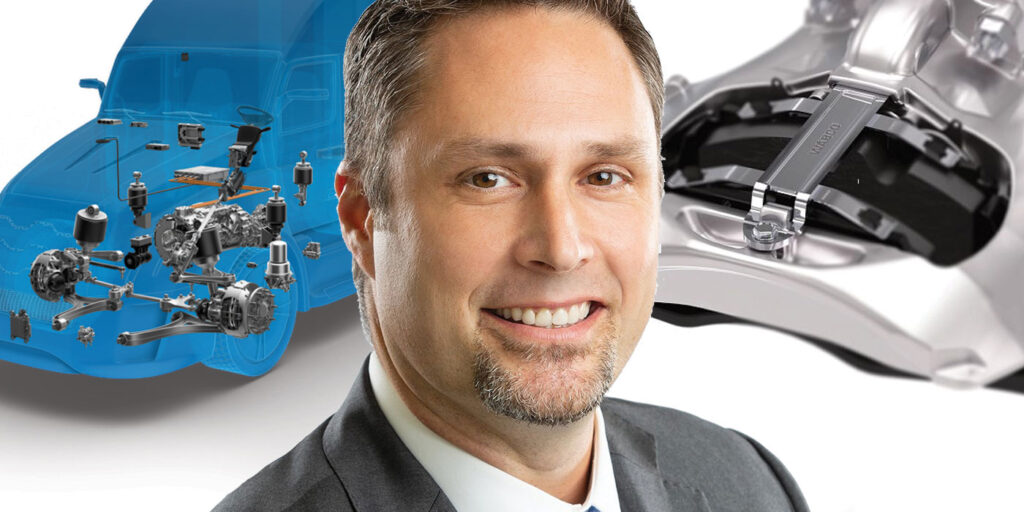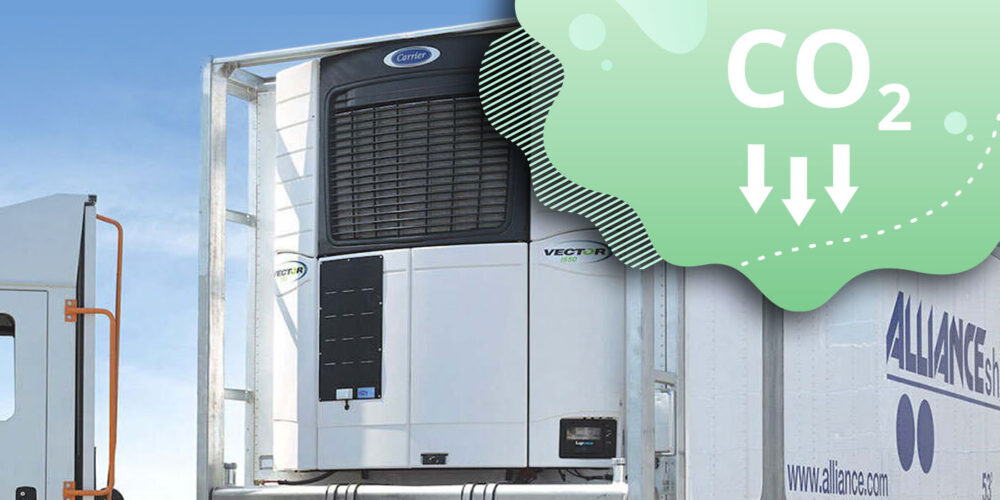You’ve likely had ZF components in your trucks for generations, but you might not have known it. The commercial component supplier has long been providing componentry like cameras and steering solutions to the market under other names that you’d likely recognize. Now that ZF has completed the acquisition and integration of WABCO, its newly launched Commercial Vehicle Solutions division is ready to grow its visible presence in the North American trucking market.
And advanced truck technology is driving the company’s market strategy.
“What we see is that everyone is thirsty for learning as far as electrification, and it goes very fast,” said Julien Plenchette, senior vice president, Americas, CVS Division, ZF Group, who noted that while OEMs are keen on developing their own understanding of electrification, he still sees them leaning on ZF as a global supplier that is developing EV technologies in Asia, Europe and North America. “We’re a system supplier that’s also vertically integrated. We can supply components, we can supply e-motors, we can supply inverters or the fully integrated assembly. And it’s a unique position for us because OEMs want to have components on a part of their platforms and a fully integrated solution on another part of their offerings, that’s a possibility that we can bring and still maintain the consistent differentiation for their brand.”
Let’s take a look at where you’ll see the ZF brand in a tangible way on today’s trucks.
ZF in electrification
We’re going to stay with the EV angle because it’s the biggest conversation in the trucking industry right now. It’s moved away from the “Chicken or the egg” cliché and there are plenty of EV “chickens” rolling in real world applications today. It’s time for more eggs.
“The development cost and validation cost of EV technologies is a heavy investment that ZF continues to support; we also have the ability to develop platforms that are scalable and modular solutions across the different application requirements, globally,” Plenchette said. “That’s a huge advantage.
“The other significant advantage that we see,” he continued, “is the overlap between passenger cars and commercial vehicles in some areas. Especially North America where you have, let’s say, pickup trucks with weights that might overlap with the lower classes of vehicles. At the sub-component level, we have an economy of scale of being a global passenger car and commercial vehicle supplier.”
What does that mean for commercial customers? A more rapid pace in the EV timeline moving toward TCO parity, according to Plenchette. EV TCO is something that ZF is starting to understand more and more as it has had its AxTrax electric axle running on a Freightliner eCascadia prototype. Last fall, the e-axle odometer passed the 1 million mile marker, imparting a host of lessons.
“We’ve had learnings from the operation of those axles in the real world, in terms of durability, in terms of energy management strategies, in terms of power delivery strategies, as well as working on the vehicle integration level with the customer,” he said. “We took all those learnings to build into our next generation of e-axles and central drive that we’re going to be launching in 2023.”
ZF in ADAS, automated trucks
ZF’s demonstrations of automated commercial vehicle operation have been numerous and impressive. We’ve seen tablet-controlled trailers and vehicles that can make an emergency lane change. The latter system was built on the foundation of advanced driver assistance systems (ADAS), the same system that tomorrow’s automated driving solutions will leverage.
“Fully autonomous trucks are a combination of all technology roadmaps,” Plenchette explained. “We’re launching OnGuardMAX, our latest ADAS, which offers not only the latest safety features, but driver assistance features that surround the truck and trailer in terms of safety.”
He rattled off a number of other component segments that ZF continues to develop:
• Vehicle controls;
• Redundant steering;
• Redundant braking;
• trailer braking; and
• connectivity.
To name a few.
“The combination of all these technologies is converging towards the same target,” he said. “We can really see these applications in an unrestricted environment; we also see a huge roadmap of applications with different levels of driver assistance.”
The comment harkens back to the remote-trailer control that enables a driver to maneuver the tractor and trailer via a tablet while standing outside of the cab. These technologies not only aim to improve safety but they also reduce the amount of fatigue a driver experiences—a narrative that continues to grow. For ZF, the key is having a deep understanding of the componentry that enables the technology, allowing them to be part of the conversation even if their brand is embolized on the truck.
“Everyone that’s working on an autonomous truck–we certainly work with one way or another, whether they are an autonomous driver developer, an OEM or both. Even if we don’t supply all the components, we have the ability of anticipating and understanding the integration of all of those components.”
Case in point, ZF is introducing its ProAI—a power computing component line that helps enable automated driving systems.
ZF in braking systems
Bringing it back to today’s trucking reality, ZF is making strides in the air disc brake segment, having recently announced that C.R. England will transition its entire fleet of 4,000 Freightliner and International trucks to MAXXUS L2.0 Air Disc Brakes by 2024.
The MAXXUS L2.0 ADB weighs in as a featherweight at 67 lbs. The single-piston MAXXUS L2.0 fewer parts reduce complexity and lead to faster, easier maintenance, ZF noted. Additionally, the MAXXUS L2.0’s advanced adjuster mechanism is designed to continuously adapt to maintain an optimal running clearance–even in extreme conditions–helping to provide stable and consistent performance.
The MAXXUS name is clearly recognizable, but ZF might not be the brand that immediately springs to mind. That’s changing. Plenchette explains:
“Even when fleets buy equipment from different sources, they manage their equipment together; they see it holistically. We also have that privilege of being in the position to look at our product offerings holistically. We are launching our new ADAS safety solution, and we’re launching connectivity for trailers with the knowledge around our ABS and vehicle controls built into it. We are deeply involved in tractor to trailer connection.
“Our focus is on our strategy to bring technology at the right speed, the right roadmaps, to fuel our customers’ success towards the transformation into fully electrified, fully autonomous, and fully connected vehicles. There’s no doubt in my mind that we’ll be the global leader in bringing technology to this industry.”
Where we saw it first
The ZF Innovation Trailer sitting outside of the TMC 2022 expo hall was the first time you could see how it all came together. Click below to take a virtual tour through the trailer.














